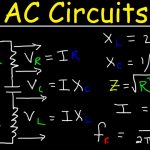Electrical filter is a circuit, designed to reject all unwanted frequency components of an electrical signal and allows only desired frequencies. In other words a filter is a circuit which allows only a certain band of frequencies.The main applications of the filters are at audio equalizers and in sensitive electronic devices whose input signals should be conditional.These filters are mainly categorized into 2 types. They are Active filters and passive filters.
Passive Filters
Passive filters do not contain any amplifying elements just they are made up of Resistor, Capacitor and inductors (passive elements). These filters will not draw any additional power from the external battery supply. The Capacitor will allow the high frequency signals and inductor allows low frequency signals. Similarly inductor restricts the flow of high frequency signals and capacitor restricts the lower frequency signals. In these filters output signal amplitude is always less than the amplitude of the applied input signal.The gain of passive filters is always less than unity.This shows that the gain of the signals are cannot be improved by these passive filters. Due to this the characteristics of the Filters are affected by the load impedances. These filters can work at higher frequency ranges nearly at 500 MHz also.
Active Filters
Active filters contain amplifying elements such as Op-Amps, Transistors and FET’s (active components)in addition to the passive elements (Resistors, Capacitors and Inductors). By using these filters we can overcome the drawbacks of Passive filters. Active filters will depend on external power supply because it will amplify the output signals. Without any inductor element these can achieve the resonant frequency that is the input impedance and output impedances are nullified by each other. In following year’s inductor less filter design is made. Because inductors dissipate some amount of power and generates stray magnetic fields. Not only have these problems, but also due to inductor the size of the active filter increases. So, due to these reasons the use of inductors in active filters is reduced.
Some of the advantages of Active filters
· The combination of op-amps, resistors, capacitors, transistors and FETs gives an integrated circuit which in turn reduces the size and weight of the filter.
· The gain of an Op-amp can be easily controlled in the closed loop form. Due to this reason the input signal is not restricted.
· These are applicable in Butterworth filters, Chebyshev and Cauer filters.
The main drawback in active filters is the operational frequency range is less. In many applications the operational frequency range of active filters is maximized to 500 kHz only. The active filters must require D.C power supply. When compared with the passive filters these active filters are more sensitive. The outputs may disturb even due to the environmental changes also.
The filter is a sensitive circuit and in which the output components are only frequency terms. To analyze the filter circuit the frequency domain representation is the best one. This representation is as shown below.

The magnitude of the filter M is called as the gain of the filter. Magnitude is generally represented in dB as 20log (M).
One of the important characteristic of the filters is cut-off frequency. It is defined as the frequency which separates both pass band and stop band in frequency response. Pass band is the range of frequencies that are allowed by the filter without any attenuation. Stop band is defined as the band of frequencies that are not allowed by the filter.
Filters are classified based on the frequency of signals that they allowing through them. There are four types of filters they are Low Pass Filters, Band Pass Filters, High Pass Filters and Band Stop Filters. Due to the usage of high speed op-amps and approximate values of the components the characteristics of ideal and practical responses are nearly equal.


